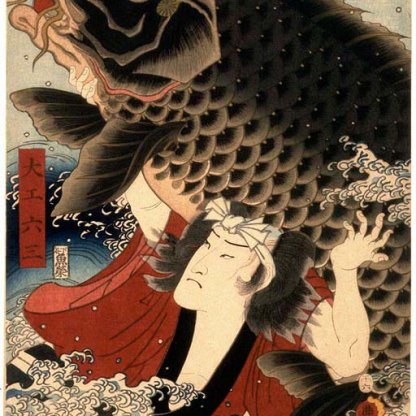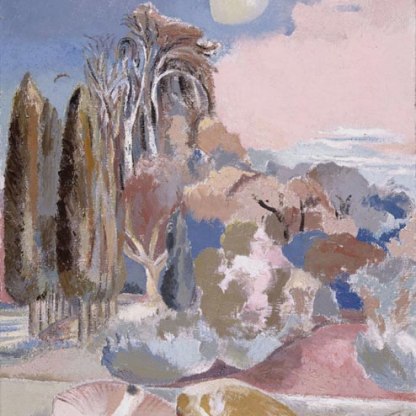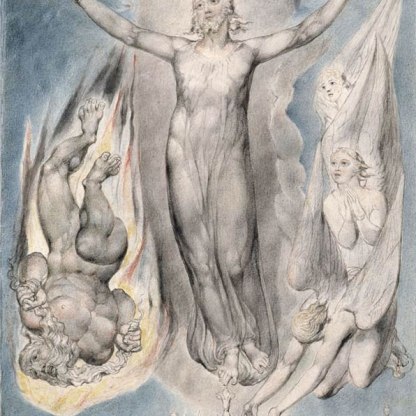Woodblock Print

'When I look up at / The wide-stretched plain of heaven, / Is the moon the same / That rose on Mount Mikasa / In the land of Kasuga?'
Abe no Nakamaro, the author of this short poem – known as a tanka – was a Japanese noblemen who in 717 travelled to China, never to return to his homeland. According to one legend, he had been sent to discover the secrets of the Chinese calendar but was forcibly detained by the emperor. Locked in a pagoda, he noticed the moon rising in the east and, reminded of the sky behind Mount Mikasa in Japan, he wrote the poem in his own blood.
Another legend tells how his journey home was hampered by bad weather. Given the outdoor setting and the wind-flapped pennants in the print, it is perhaps this version of the story that the great Japanese printmaker Katsushika Hokusai had in mind. He has created a poignant image.
Nakamuro stands on an elevation and looks out across the ocean. The area above the horizon is strangely empty, but the moon – the subject of his gaze – is reflected in the water, a perfect white disc alongside two fishing junks.
The poem is written in the yellow box in the upper right. Beside it is the title of the series from which the print comes: Hyakunin isshu uba ga etoki – 'One hundred poems by one hundred poets as explained by a nurse'. The anthology upon which Hokusai based his series, and which is still popular in Japan, was compiled in 1235 by the poet Fujiwara no Teika. To the right of the title we see the artist’s signature: Zen Hokusai Manji, which literally means ‘formerly Hokusai, now Manji’. The artist used more than sixty different signature styles during his lifetime. This print comes from his last great series and was made when he was 76 years old.
Two Chinese attendants bow beside Nakamaro, and a group of men linger at the foot of the hill. The poet is clearly respected, but there are suggestions that he is being held under compulsion. A striped screen encloses the area around his house. His guards carry long lances. The boats that could take him back to Japan are tantalisingly visible, yet distant. Home, represented by the moon, is a mere reflection in the water. A preparatory drawing for the print shows the moon in the sky. Here its reflected image emphasises further the poet’s detachment from his native land.
Nakamuro lived in China until his death, during which time he became a Governor of what is now Vietnam. In a speech delivered in China in 1997, the then Japanese Prime minister Ryutaro Hashimoto hailed the exiled poet as a model for Sino-Japanese relations:
'In the end, Nakamaro was never to return to Japan. The wind and waves barred his passage. Today, he rests in Xi-an. He and Jianzhen [a Chinese monk] who rests in Japan are examples of people who have had the determination to travel between our countries seeking friendship and truth. Today, our capitals are only three hours apart by plane. At the dawn of the twenty-first century, the path lies open for us to transcend our times in the development of friendship and amity between China and Japan.'
An opera about Nakamaro was specially written to commemorate the thirtieth anniversary of the normalisation of relations between China and Japan. Separated by miles of ocean and centuries of rivalry, ultimately the same moon shines over both nations.
Themes and periods
Data from our collections database
Acquisition and important dates
- Method of acquisition: Given
- Dates: 1821
Maker(s)
- Clérisseau, Charles Louis Draughtsman
Materials used in production
Read more about this recordOther highlight objects you might like
Suggested Curating Cambridge products
Sign up to our emails
Be the first to hear about our news, exhibitions, events and more…





